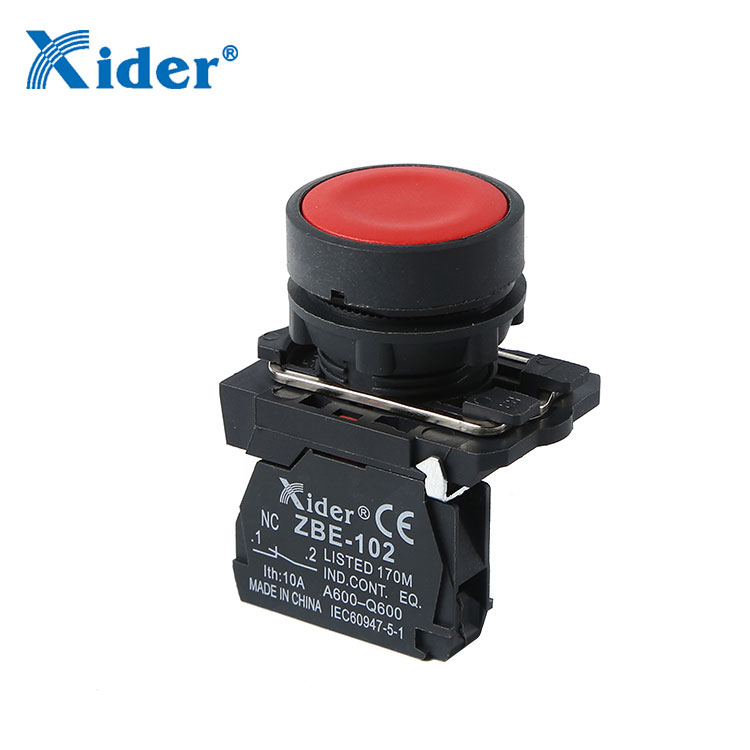There are many kinds of push button switch structures, which can be divided into common snap type, mushroom head type, self-locking type, self-resetting type, rotary handle type, type with indicator light, type with light signal and key type, etc. There are single button, double button, three buttons and different combination forms, generally using
Building block structure, consisting of button cover, reset spring, bridging point and housing, etc.
Usually made of composite materials, there is a pair of normally closed contacts and normally open contacts, and some products can increase the number of contact pairs through the series connection of multiple components. There is also a self-retaining button, which automatically remains in the closed position after pressing and opens after power failure. Pushbutton switches can perform basic controls such as start, stop, forward and reverse, variable speed, and interlock. Typically, each pushbutton switch has two pairs of contacts. Each pair of contacts consists of a normally open contact and a normally closed contact. When the button is pressed, the two pairs of contacts act simultaneously, with the normally closed contact breaking and the normally open contact closing.
In order to mark the role of each button to avoid misoperation, the button cap is usually indicated by different colors, the colors are red, green, black, yellow, blue, white, etc.. For example, red indicates the stop button, green indicates the start button, etc. The main parameters, type, mounting hole size, number of contacts and current capacity of the contacts of the pushbutton switch are described in detail in the product manual LA115 and other series. When the button is pressed for the first time, the circuit is turned on when the button is pressed, and broken when the button is pressed again.
ON.
The single button self-locking switch has the following main properties.
1. No action at power-up.
2. When the button is pressed and then released, the relay is activated.
3. When the button is pressed for a long time, the relay is released, and when the button is released, the relay is activated.
4. When the button is pressed, the relay is released and activated for one cycle.
5. Because there is a voltage drop across resistor #47, the relay can be used with DC9 V. The non-latching switch, a term rarely heard, should refer to a dip switch, which is the kind that is pressed. The circuit is on, and when the hand is released, the circuit is broken. Of course, a dipswitch can also form a self-locking switch through a self-locking circuit. Two dipswitches and a self-locking circuit can form a self-locking switch, but this form is more complex than a mechanical self-locking switch and requires specialized knowledge. Therefore, it is only suitable for specific applications. Single-button self-locking switches and non-self-locking
What is the difference between a switch and a self-locking switch? A self-locking switch is a switch that locks into its circuit switch








